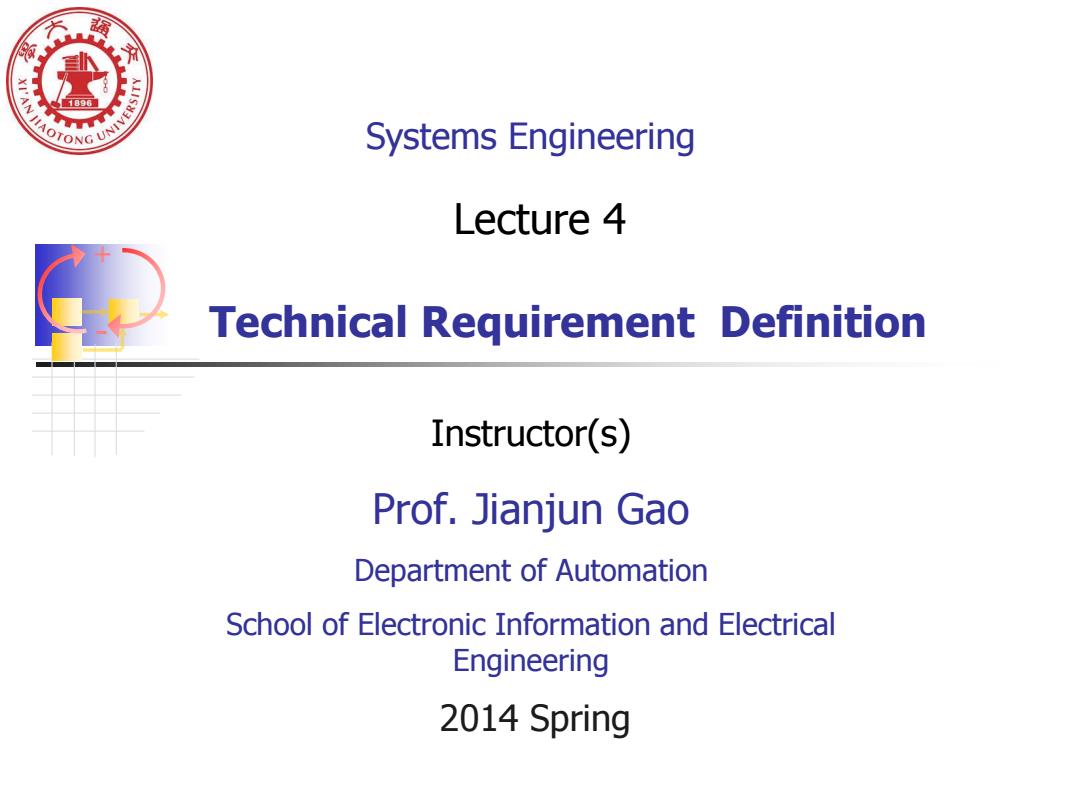
JIAOTONG UNIVERSITY 096 Systems Engineering Lecture 4 Technical Requirement Definition Instructor(s) Prof.Jianjun Gao Department of Automation School of Electronic Information and Electrical Engineering 2014 Spring
Systems Engineering Instructor(s) + - 2014 Spring Technical Requirement Definition Prof. Jianjun Gao Department of Automation School of Electronic Information and Electrical Engineering Lecture 4
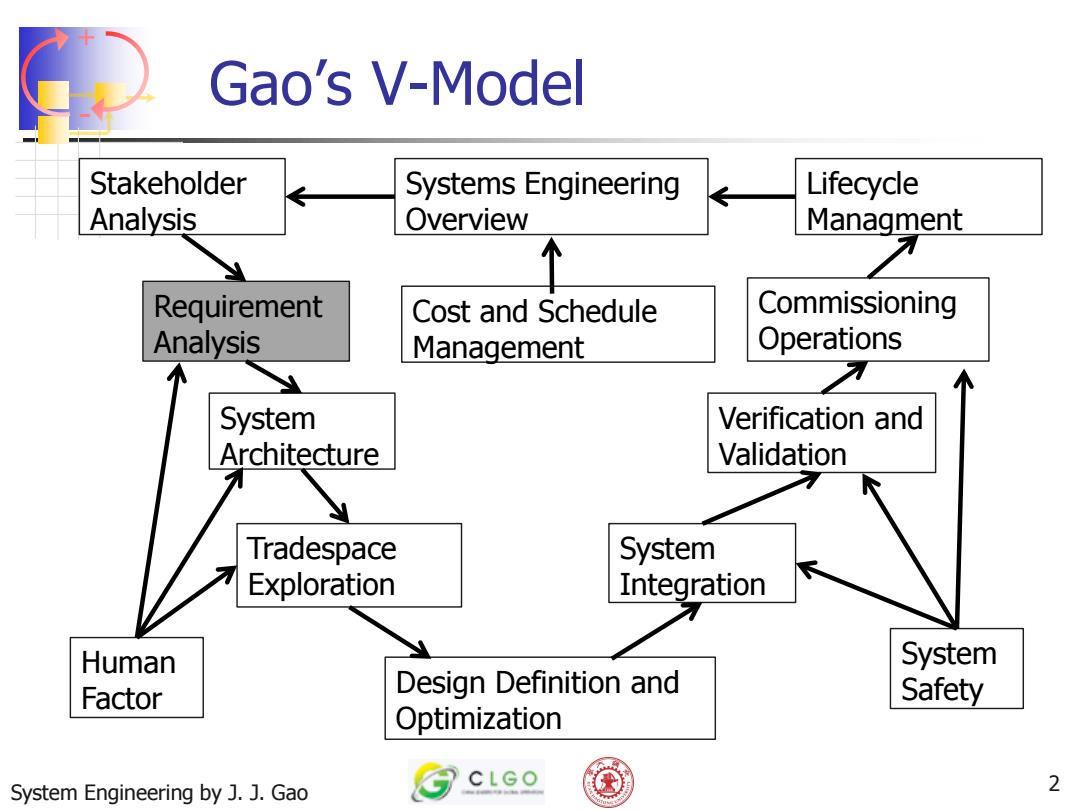
Gao's V-Model Stakeholder Systems Engineering Lifecycle Analysis Overview Managment Requirement Cost and Schedule Commissioning Analysis Management Operations System Verification and Architecture Validation Tradespace System Exploration Integration Human System Factor Design Definition and Safety Optimization CLGO System Engineering by J.J.Gao 2
+ - System Engineering by J. J. Gao 2 Gao’s V-Model Stakeholder Analysis Requirement Analysis System Architecture Tradespace Exploration Design Definition and Optimization System Integration Verification and Validation Commissioning Operations Lifecycle Managment Systems Engineering Overview Cost and Schedule Management Human Factor System Safety
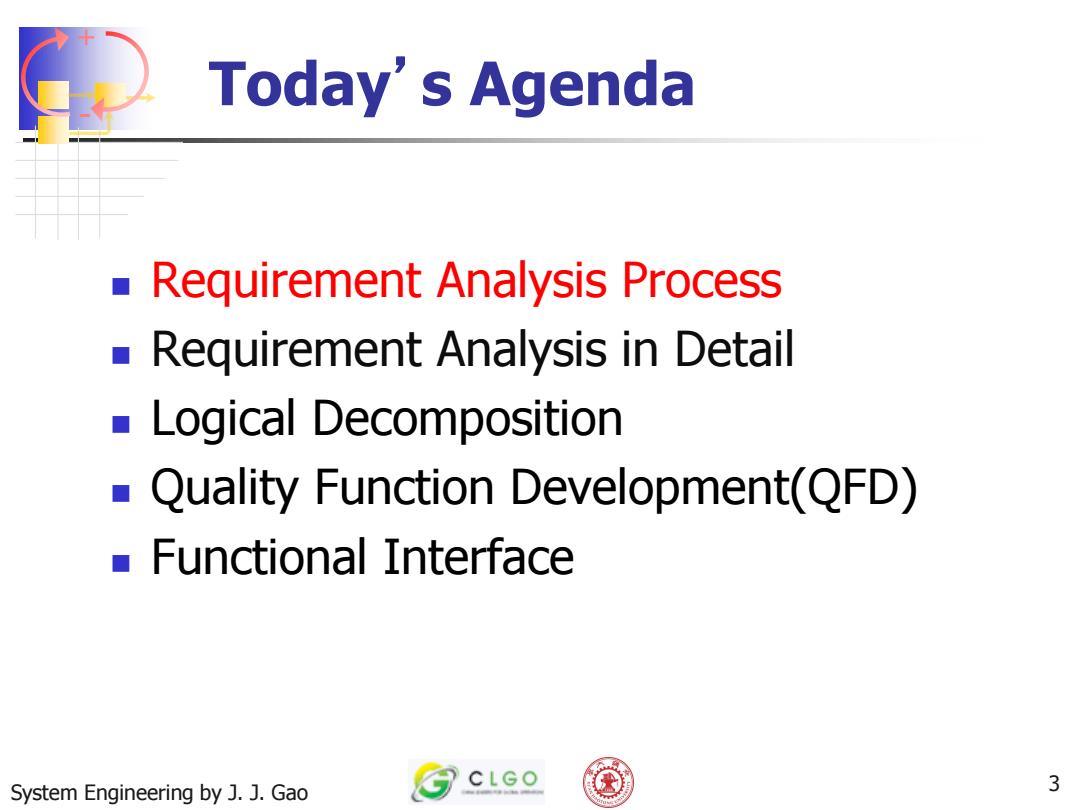
Today's Agenda Requirement Analysis Process Requirement Analysis in Detail Logical Decomposition Quality Function Development(QFD) Functional Interface CLGO System Engineering by J.J.Gao 3
+ - 3 Today’s Agenda Requirement Analysis Process Requirement Analysis in Detail Logical Decomposition Quality Function Development(QFD) Functional Interface System Engineering by J. J. Gao
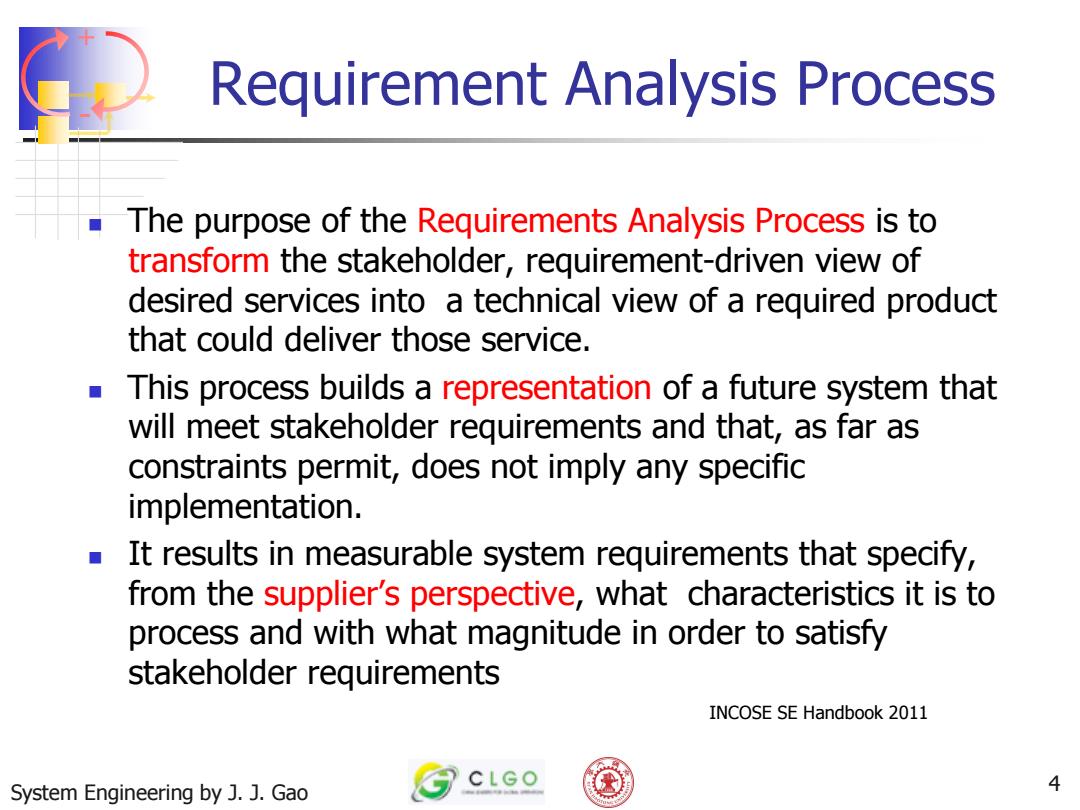
Requirement Analysis Process The purpose of the Requirements Analysis Process is to transform the stakeholder,requirement-driven view of desired services into a technical view of a required product that could deliver those service. This process builds a representation of a future system that will meet stakeholder requirements and that,as far as constraints permit,does not imply any specific implementation. It results in measurable system requirements that specify, from the supplier's perspective,what characteristics it is to process and with what magnitude in order to satisfy stakeholder requirements INCOSE SE Handbook 2011 CLGO System Engineering by J.J.Gao 4
+ - The purpose of the Requirements Analysis Process is to transform the stakeholder, requirement-driven view of desired services into a technical view of a required product that could deliver those service. This process builds a representation of a future system that will meet stakeholder requirements and that, as far as constraints permit, does not imply any specific implementation. It results in measurable system requirements that specify, from the supplier’s perspective, what characteristics it is to process and with what magnitude in order to satisfy stakeholder requirements System Engineering by J. J. Gao 4 Requirement Analysis Process INCOSE SE Handbook 2011
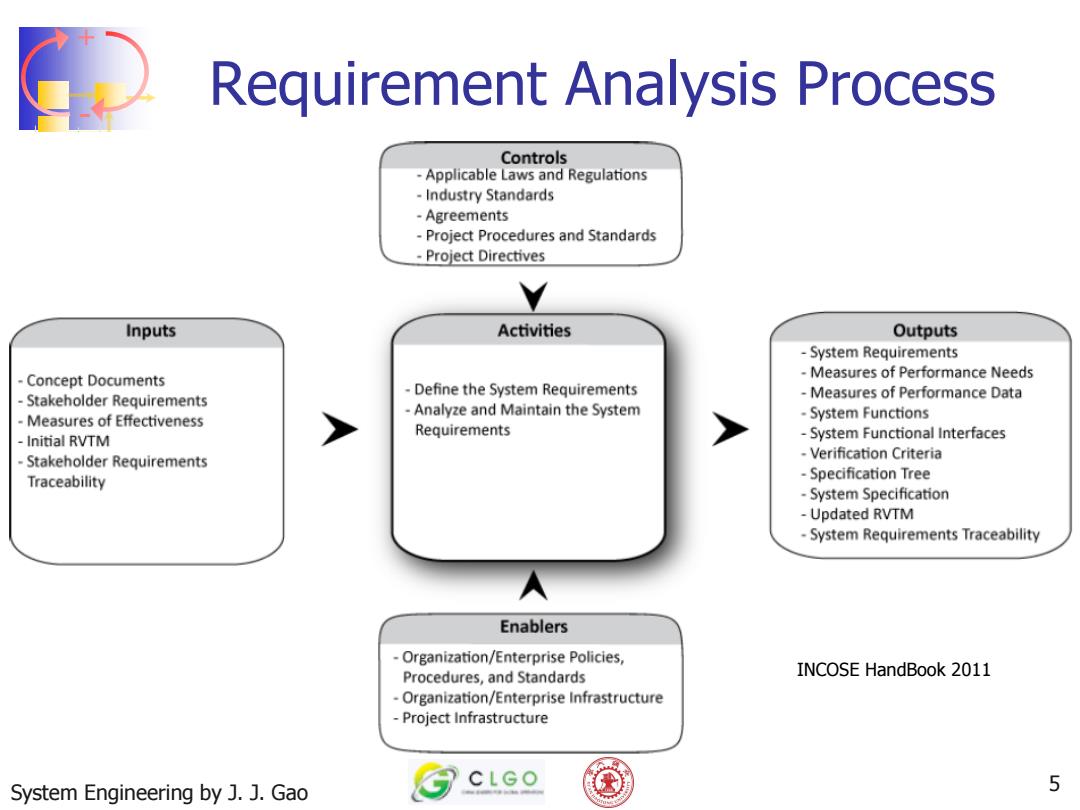
Requirement Analysis Process Controls Applicable Laws and Regulations Industry Standards -Agreements Project Procedures and Standards Project Directives Inputs Activities Outputs -System Requirements Concept Documents Measures of Performance Needs Define the System Requirements Stakeholder Requirements -Measures of Performance Data Measures of Effectiveness Analyze and Maintain the System System Functions Requirements Initial RVTM -System Functional Interfaces Stakeholder Requirements Verification Criteria Traceability -Specification Tree System Specification -Updated RVTM System Requirements Traceability Enablers -Organization/Enterprise Policies, Procedures,and Standards INCOSE HandBook 2011 Organization/Enterprise Infrastructure -Project Infrastructure CLGO System Engineering by J.J.Gao 5
+ - System Engineering by J. J. Gao 5 Requirement Analysis Process INCOSE HandBook 2011